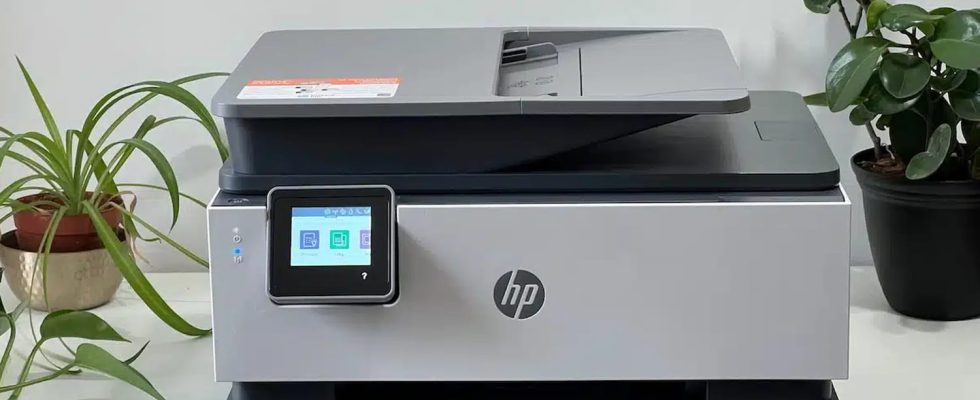HP innovates by offering a printer rental service. For an average monthly subscription, it allows you to rent different models with the ink necessary for a volume of pages. A new economic model that poses problems.
Nowadays, the trend is more and more towards renting, and no longer towards buying. Whether for films with SVODs, video games with cloud gaming, music with audio streaming, and even smartphones, we now pay subscriptions to have access to a multitude of content or devices. A way to always be on top of the trends while paying less than if you bought individually – or at least that’s the impression we have. It’s HP’s turn to try its luck with its new HP All-In Plan service. The slogan ? “Never own printers again”. It promises a rental printer, a set quantity of pages printed per month and ink shipping, all for a monthly subscription. An initiative promising ease and flexibility, intended to simplify the printing process for families and SMEs, but which is already controversial, because it requires a permanent Internet connection and a contract of several years.
HP printer rental: a controversial subscription
Deals range from $6.99 for an HP Envy model and 20 pages per month, to $35.99 for the HP OfficeJet Pro with 700 pages. In addition to the rental of the device and monthly printing, the manufacturer undertakes to send ink refills as soon as the user needs them and offers support seven days a week for possible technical problems. , 24-hour troubleshooting and the possibility of changing printer models after two years. A way to deal with the inevitable “technical issues” and to allow each and every “to print without worries, without ever having to buy a cartridge or a printer again”. But behind these beautiful promises lies a hiccup…
By promising ink refills always on time and omnipresent technical support, HP nevertheless excludes the repair and replacement of parts from the subscription – let alone the exclusion of coverage in the event of the use of cartridges and other consumables unofficial or exceeding the package. Cancellation fees ranging from $60 to $270 will also be charged to anyone who cancels their subscription before the end of the two-year commitment. But the biggest drawback is the requirement for subscribers to keep their printers connected to the Internet. A detail that may seem trivial, but which raises a major security and confidentiality problem.
Indeed, the vulnerabilities can allow cybercriminals to take control of devices to steal sensitive information or to infiltrate the networks to which these printers are connected. HP justifies this constant connection by the need to monitor elements linked to the subscription, such as the status of ink cartridges and page counting, but also to “prevent unauthorized use of your account”. Another problem: the manufacturer will take advantage of this to collect a whole bunch of personal information, such as the device and software used to start printing, the format of printed documents (PDF, JPG, DOCX, etc.) and all other metrics that HP deems relevant for the proper performance of the service. This information can then be transferred to partners in order to offer targeted advertising and build a user profile. For now, HP All-in Plan is only available in the United States, with nothing said about a possible rollout in other countries.
It remains to be seen whether this initiative will be well received by users or whether it will tarnish the image of the manufacturer, already faced with numerous criticisms and legal actions linked to its commercial practices – we are thinking in particular of the obligation to use ink cartridges from the brand, HP having blocked other compatible cartridges through an update (see our article). A maneuver intended to monopolize the consumables market and maximize profits. Note that, although the manufacturer promotes the ecological aspect of its subscription service by ensuring that printers and cartridges are recycled, highlighting the renewal of devices every two years as a commercial argument could, on the contrary, contribute to a increase in electronic waste, by encouraging users to regularly change devices instead of trying to use them sustainably. In short, not sure that this new economic model will appeal despite its originality.
